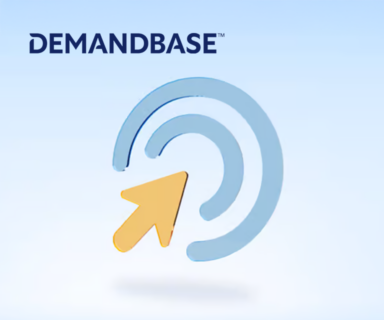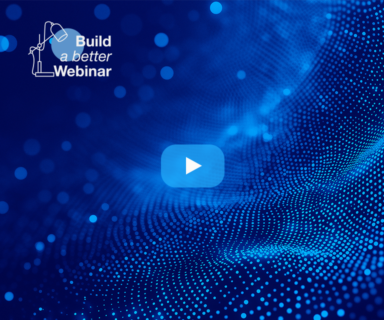 As our Priority Engine platform has grown, we’ve started to host Priority Engine User Group events in multiple cities, so marketers can understand the use cases, successes and challenges their peers are experiencing with the tool. Last week, we had our first such meeting in Boston, following up to our successful events in London and San Francisco.
As our Priority Engine platform has grown, we’ve started to host Priority Engine User Group events in multiple cities, so marketers can understand the use cases, successes and challenges their peers are experiencing with the tool. Last week, we had our first such meeting in Boston, following up to our successful events in London and San Francisco.
Below are 5 stand-out themes discussed at the Boston event:
#1 – Purchase intent insight adds significant value to sales enablement efforts
While it’s clear that every company has unique marketing/sales workflows, the lines between sales and marketing are growing even closer. At this event, every company present was represented by a marketing team member. While marketing teams made the initial Priority Engine investment, it was clear that exposing sales teams to this data adds significant value to their organizations. Throughout the discussion on sales enablement we focused on two aspects: workflows (e.g. how do marketers get Priority Engine information to sales) and what sales actually does with the data.
Workflows
The contact/lead workflow model can vary based on each organization’s goals, needs, and resources; however, it is clear coming out of this event that regardless of workflow, Priority Engine data can empower sales. We heard from marketers that exposed sales teams to Priority Engine in 3 different workflows:
- Nurture prospects to MQLs. The most common workflow is to nurture prospects and as they reach certain scoring thresholds, the accounts/contacts are passed to sales. With this, sales teams become exposed to Priority Engine data, either thought the initial data import or in Salesforce via the plug-in.
- Direct portal access. Priority Engine is a portal where a marketer or sales rep can pull levers to expose and rank different segments of IT buying audiences. Some marketers have exposed (and with TechTarget’s help) trained reps how to use the tool.
- Salesforce plug in. Many teams at the event have chosen to expose sales teams to this data via the Salesforce plug-in. This allows reps to see the intent data and contact information within the environment they live and breathe in daily. Reps can view this on the contact or account view page and tailor outreach based on the data.
What sales teams do with the data
We heard specific examples from multiple attendees about how their sales teams use Priority Engine to enhance success. Top examples include:
- Crafting messaging. One successful user provided the data to sales so reps could “focus on specific accounts” and “get smart” about following up with them. With the data provided in Priority Engine, reps can rank who they follow up with as well as customize their outreach.
- Sales Prospecting. Another user of the tool exposed sales teams to the tool to help support prospecting. In this scenario, the sales team was using the tool to identify the accounts/contacts to invite to regional events in their prospecting efforts.
- BDRs tease Sales Reps to increase adoption. Sales teams are busy, and most have many tools and plug-ins making their process more complex every day. To help get a sales team to embrace this new data source, we heard from one successful user that first exposed their inside sales team to the data. Inside sales was able to use the data to get more meetings. When the field sales team saw this success, they wanted to get access and use this data for their continued follow up. The takeaway here is to build success with a tiger team, or small group, first, and let that success spread organically.
#2 – Strengthen partner relationships with better data
Another stand-out use case discussed by many at the user group was supporting partners. The examples mentioned covered two different types of partner support:
- Channel partner enablement. In this example, we heard from a user that had a channel partner that sells into the pharmaceutical vertical exclusively. To help support this partner, our user segmented the total addressable market by vertical and then delivered that stack ranked list of accounts/contacts to their partner. This enabled their partner to get more volume than ever before, but also provided valuable data to enhance outreach.
- Strengthen OEM partner relationships. In another case, a user had a strong partnership with an OEM vendor. The OEM wouldn’t share their customer list with this vendor, so the vendor used Priority Engine to segment based on install data via HG Data. This resulted in a list of ideal accounts to target that have the OEM vendor installed.
# 3 – Actionable data = POWER
The data provided in Priority Engine is actionable for both marketing and sales teams. The ability to understand what IT buyers care about at account level, and then see who at those accounts is actually researching, is immensely powerful.
During our discussion, one user shared that their goal is to find teammates involved in the purchase decision. This particular user had a model where they scored accounts higher based on the volume of buying team members they could identify.
TechTarget exposes the Total Buying Team in order to create more significant inroads into target accounts. This model ensures you’re reaching all applicable buying team members, and will help marketers reach their goals more effectively.
#4 – Build more dynamic data-driven ABM lists
Perhaps the most common theme discussed by all attendees was the idea of using Priority Engine to support a named account or ABM function. Many of these ABM goals were tightly aligned to sales teams. In these cases, ABM lists are loaded to the tool either as one list, or multiple lists separated by rep. The reps then are able to gain insight on multiple levels to fine tune their messaging.
Another key factor identified here is that ABM lists are dynamic in nature, and understanding that accounts are always moving in-and-out of buy cycles is critical. Building an account list with the idea that the accounts on that list should be refreshed or changed regularly will also yield considerably more success. Alternately, you could consider using Priority Engine as the foundation for building your ABM list, as it allows you to segment the audience and rank that audience based on your targets and goals.
#5 – Managing KPIs with third-party data tools
An almost universal challenge that marketers face is tracking ROI. Tracking ROI is still a huge challenge as Salesforce and automation vendors don’t have complete multi-touch systems yet. Other challenges include relying on sales team to help enter and update opportunities correctly, or even understanding how much “influence” to associate per touch.
Making this challenge even more complicated is that a data solution like Priority Engine might not have straight forward KPIs to manage. In fact, multiple vendors at this event said they bought the tool without metrics or ROI in mind.
However, it does help to learn what tools other marketers are using and what they like. It was addressed that some are using Full Circle Insights. Full circle is a full funnel tracking system to help determine what is working and what isn’t. The tool can visualize conversion rates for each stage of the funnel by tactic and plugs into Salesforce.
Full Circle has both first touch and multi-touch attribution models and can show three models running at the same time. With this system, one marketer identified that Priority Engine is better at converting inquiries to SQLs than other marketing tactics.
If you are interested in participating in a future Priority Engine user group, please reach out today.




